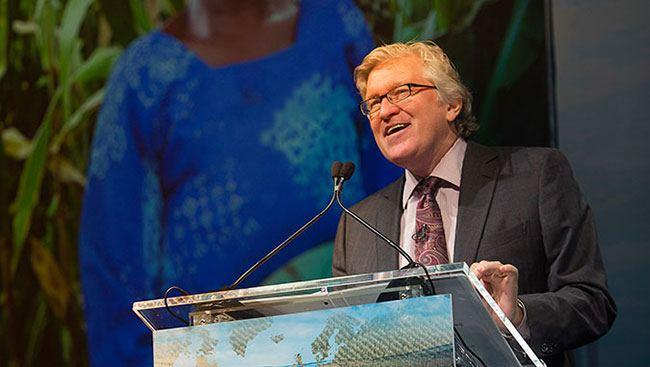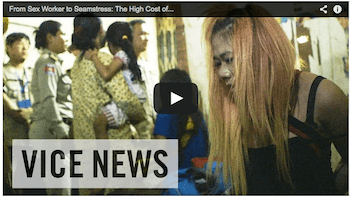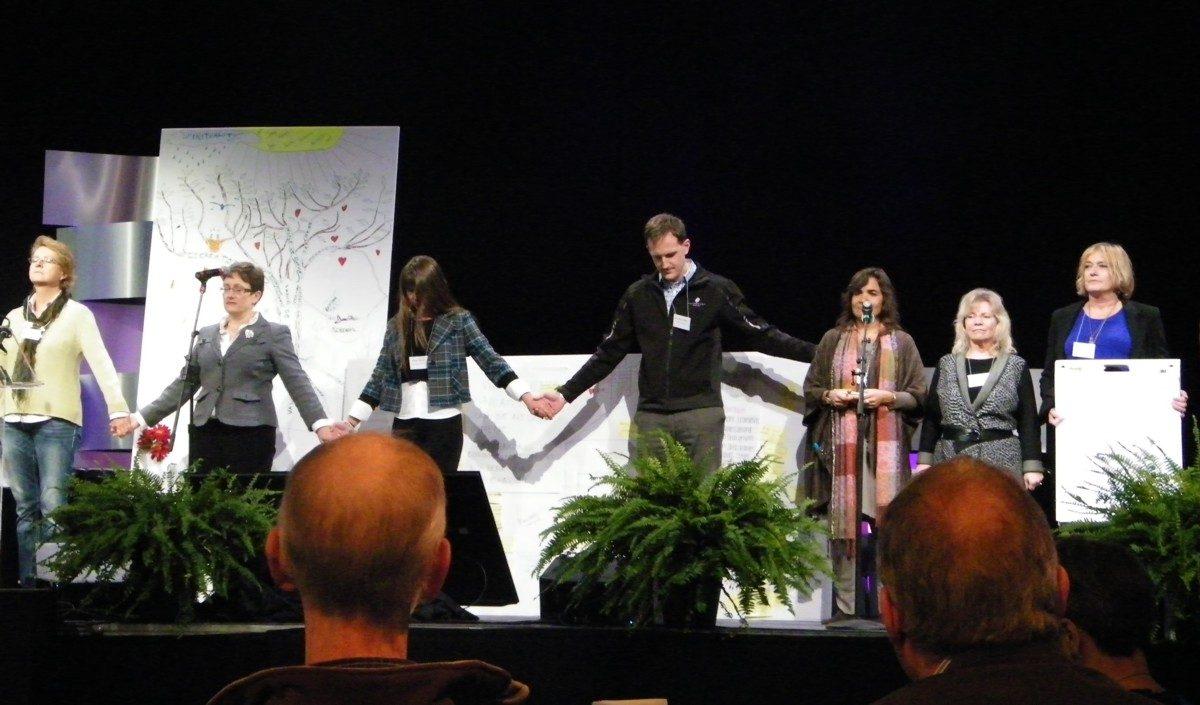Too few enforcing anti-bribery laws, finds Transparency International


Many leading economies are failing to stop their companies from spreading corruption around the world, anti-corruption group Transparency International has warned in its annual progress report on enforcement of the OECD anti-bribery convention.
Fifteen years after the entry into force of the convention, only four of 41 countries signed up are actively investigating and prosecuting companies that cheat taxpayers when they bribe foreign officials to get or inflate contracts, or obtain licences and concessions. Five countries were classified as having moderate enforcement, while another eight had limited enforcement.
“For the anti-bribery convention to achieve a fundamental change in the way companies operate, we need a majority of leading exporters to be actively enforcing it, so that the other countries will be pressured to follow suit,” said Transparency International chair José Ugaz. “Unfortunately, we are a long way from that tipping point, and that means the vision of corruption-free global trade remains far away.”
Twenty-two of the countries party to the OECD Convention are doing little or nothing by way of enforcement. The 22 countries represent 27 per cent of world exports. Transparency International said enforcement is low because investigators lack political backing to go after big companies, especially where the considerations of national economic interest trump anti-corruption commitments. Investigators also often lack the resources to investigate complex white-collar crime.
The four leading enforcers (Germany, Switzerland, United Kingdom, United States) completed 225 cases and started 57 new cases from 2010-2013. The other 35 countries completed 20 and started 53. Twenty countries have not brought any criminal charges for major cross-border corruption by companies in the last four years.
Canada is the only country to show significant improvement since last year’s report, having significantly improved its foreign bribery law and started several investigations.
Nine of the 20 countries with the least public sector corruption are doing little or nothing to make sure their companies follow the same standards overseas, allowing them to contribute to public sector corruption elsewhere.
Nine of the countries in the G20 are in the little or no enforcement categories, meaning they are failing to meet the goals set in the G20’s anti-corruption action plan.
What Makes a Quality Carbon Offset


When critics want to show that carbon offset programs don’t work, they’ll often point at Coldplay’s first carbon offset investment. In 2002, the British rock band announced that to offset the environmental impact of their second successful album, a Rush of Blood to the Head, they planned to plant several thousand mango trees in southern India. The announcement was well received: Not only did Coldplay contribute, but fans logged in online to support to the investment. The planting of 10,000 trees was viewed as a worthy investment to balance the many units of carbon produced by the band’s increasingly successful, and carbon-dependant lifestyle.
Four years later, it was revealed that forty percent of the trees had died, allegedly from lack of water. The trees that were to provide carbon sequestration for all those hours of electricity usage, plane rides, performances and retakes were billed as a failed investment.
What critics often don’t relate is the second part to the story: Some years later, Coldplay returned to that initial vision and invested in a forest on the outskirts of an abandoned mine with other investors to transform a World War II armament site into an ecological preserve.
Both Coldplay and Carbon Neutral Company, the carbon offset provider they had contracted through, went on to invest in and manage numerous other offset programs. But, both learned a critical lesson from that initial, embarrassing failure: the necessity of due diligence and the value of adhering to every one of the principles of carbon offsetting.
What makes carbon offsetting work?
It’s easy to get caught up in the nanospeak of carbon offsetting. But the principles are fairly straightforward. Carbon reduction occurs when two parties enter into an exchange that allows the greenhouse gas production of one to be offset or counterbalanced by the environmental benefits of another.
So for example, United Airlines says that it invests in wetland habitat in California, renewable energy programs in Texas and forest conservations in Peru. Those monetary investments into “green” long-lasting infrastructure help counteract CO2 emissions that are produced by United’s global fleet.
But it isn’t enough for United to invest in forests, wetlands and community programs. What makes United’s investments work are what could be called the five pillars of carbon offsetting:
1. The exchange must be quantifiable
A business owner who is considering investing in a GHG reduction program will calculate his business’ carbon emissions first. United Airlines states that it based its calculations on the fuel consumption of its entire fleet and factored in elements that were specific to its business: routes, plane cargo, passenger weight, etc. These specific calculations gave them their carbon footprint, an essential factor in determining their carbon offset goal.
Terrapass, the EPA, and a host of other organizations offer calculators online.
And don’t forget: the certifying agency you contract with (see below for more information) will probably review these numbers with you to ensure your calculations meet the needs of the program.
2. Additionality holds the whole program together
The concept that often seems most nebulous is actually the glue to the entire program: A carbon offset program only has value if you can prove that it wouldn’t have happened without the investment. That wetland preserve for example, wouldn’t have been built without that willing partnership. And that wind farm in Texas wouldn’t have been developed if it hadn’t been for the investment from the power company that wanted to offset its huge greenhouse gas bill.
To determine whether the project will pass the additionality test, you must first know its baseline, which as the Nature Conservancy describes it, is “the carbon emissions or carbon storage that would have occurred without the project.” You can then subtract that information from the carbon emissions of the anticipated project to determine the actual carbon emission savings.
Michael Gillenwater of Greenhouse Gas Institute points out that one of the benefits of a carbon offset program is it “incentivizes private actors to search for and locate low cost opportunities that policy makers either cannot access or lack information on.” It provides an essential link between two entities that leads to further GHG reduction through voluntary, mutual concessions.
3. There must be no carbon leakage
Say you own a manufacturing business in New York and you decide you want to invest in an ecological preserve in Guatemala that is going to help save a valuable tropical ecosystem. But the establishment of that eco park results in the displacement of a local lumber business that later clears a large swath of jungle in another part of the country for its logging business, instead. The carbon reduction is then nullified by the migration, or "leakage" of carbon emissions.
Investors need to ensure the due diligence to make sure that the partnership isn’t going to (inadvertently or otherwise) lead to displacement or other problems that create more GHG emissions.
4. The offsets must be permanent
Permanence is particularly important when it comes to forestry projects. Will the forest remain standing in perpetuity? Or is the grove at risk of being harvested later? Are there safeguards in place to ensure that wetland preserve will remain as a home for native species, or is it in commercial zoning that will later put it at risk?
GHG emission offset programs rely on the understanding that those investments will lead to the permanence and perpetuity of the project.
There must be third-party oversight and certification
These days there are a variety of independent third-party verification programs. Some consider the Gold Standard to be the ultimate example of third-party verification program. It is used by nongovernmental organizations throughout the world, including World Wildlife Federation International, Canada-based David Suzuki Foundation and Greenpeace International, and is endorsed by the Forest Stewardship Council. It sets a high bar when it comes to additionality, which helps to protect your investments as well as the success of the project.
Carbon offset organizations like Terrapass and UK-based Carbon Neutral Company serve as vendors to help facilitate carbon offset partnerships. Both represent project that have either Gold Standard or Voluntary Carbon Standard rating, ensuring that the programs have passed rigorous scrutiny. Keep in mind as you search explore carbon offset programs and vendors that each vendor is different, and some offer specialized projects that may or may not fit your business’ individual needs.
Image: Yahoo/Vestas Flickr, cc
SolarCity Turns to Crowdfunding to Raise Money & Awareness


SolarCity is hot on Wall Street these days, judging by the fact its stock is holding steady and the company has no problem issuing bonds for its various investments. In fact, not only was the company the first in the U.S. to sell bonds backed by rooftop solar panels, it raised over US$200 million during its third debt offering on the markets in three months. Now SolarCity is turning to crowdfunding, albeit a tightly managed program, in order to raise more funds.
The system is akin to Kickstarter or Indiegogo meeting Fidelity or Vanguard. According to SolarCity, the offer to invest in Solar Bonds is relatively simple. You open an account, deposit some money and those funds in turn offer a return from the payments from residential and commercial projects SolarCity has all over the country. Unlike the growing solar crowd-funding juggernaut Mosaic, these funds are not for specific projects; rather they are akin to a mutual fund for current and future SolarCity initiatives. So should investors jump in, or is this the Amanda Palmer crowdfunding campaign of the clean energy sector?
Perusing through the Solar Bonds site, the site is as much as about preaching the impact solar can have as much as it is about investing. SolarCity touts the potential amount of jobs the solar industry could create, as well as the fact it can have a leading role in reducing pollution and mitigating climate change. But before you think you can invest just $20 and get a keychain from Solar City, think again: the minimum investment is $1,000, which is still a fairly low barrier for entry into this market—and there are no fees. Depending on your patience and aversion to risk, you can invest in a series that matures in one year at two percent or four percent after seven years. The returns are not totally out of line with U.S. corporate bonds, though the yield is on the low side. They are still better overall than municipal bonds or U.S. Treasuries—for now.
And considering how low interest rates are for bank CDs (I forgot they were still offered, I thought they disappeared in the 1990s), they could possibly be a safe investment for someone who is skittish about the stock market but clearly does not want to leave all of his or her cash in the bank. While SolarCity paints a nice narrative about the safety of these bonds, remember no investment, ever, is entirely risk-free. These have been heady days for SolarCity, which claims it has installed one in three solar systems in the U.S. and has installations worth about US$5 billion. The solar industry overall is on the upswing, due to more corporate investments and growing awareness of solar’s financial benefits from consumers. But things change on a dime: After all, who would have guessed oil would be at $80 a barrel and give angst to shale gas producers despite the volatility in the Middle East and overstated fears of a virus? As with any investment, assess your appetite for risk versus returns, and read those prospectuses—they are published for a reason.
After a year in the Middle East and Latin America, Leon Kaye is based in California again. Follow him on Instagram and Twitter. Other thoughts of his are on his site, greengopost.com.
Image credit: Solar City
6 Ways Big Data Helps Improve Global Water and Food Security


By Molly Nance
Jeff Raikes, former CEO of the Bill & Melinda Gates Foundation and co-founder of the Raikes Foundation, said it’s not hyperbole to say that global society is experiencing a data revolution. But that the revolution has yet to reach agriculture.
It’s not surprising the former Microsoft Corp. executive believes in the power of technology, and in particular Big Data. But it’s his experience as the son of a farmer that led him to focus on how technology can help farmers increase yields, improve their livelihoods and collectively meet the food production needs of the world’s people.
Raikes gave the keynote presentation at the 2014 Water for Food Global Conference, in Seattle, Wash. on October 20.
The demand for food is expected to double by 2050 as the world’s population barrels toward 9 billion people and increasing incomes allow many more to afford a better diet. Lack of water is a critical constraint.
To help solve this enormous challenge, the agriculture and water communities are harnessing Big Data to ramp up food production with less pressure on our water resources.
The conference is highlighting ways in which Big Data is helping create a more water and food secure world.
- Precision agriculture: Precision agriculture defies the stereotype of farmers as low-tech traditionalists. Today, a host of technology, from GPS-equipped tractors to remote-controlled or even automated irrigation systems, is turning farming into a high-tech business. Computer-equipped combines gather data during harvest to create detailed yield maps, which are used to create a precise prescription of fertilizers and other inputs to improve productivity the following year. Such advances translate into higher yields using less water and energy. And, this high-tech nature of agriculture, along with its important role in feeding the world, is attracting young people back to farming.
- Smallholder farmers: Raikes said he “despises” the notion that high-tech solutions won’t be available to small, subsistence farmers in developing countries. Greater computing power is allowing researchers to sequence plant genomes faster and cheaper than ever, for example, leading to more drought- and pest-resistant crop breeds, including those prevalent in sub-Saharan Africa and southeast Asia.
- Leapfrogging technology: Many farmers in poor, rural areas, long isolated by insufficient phone service and roads, have cellphones. With these mini-computers in their pockets, they now have access to weather forecasting and market information to make better decisions, manage money and develop a wider support network, thereby improving livelihoods, as well as local water and food security.
- Mapping: Countries are also taking on Big Data projects, such as regional mapping, to improve policies and better plan for the future. The Gates Foundation supports the Africa Soil Information Service, which is developing continent-wide digital soil maps using both historic and new soil data and analyses. Other speakers described soil, flood and other mapping projects in Central America, India, Nigeria and elsewhere.
- Satellite imagery and data: Farms, big and small, already benefit from satellites that gather vast amounts of data. Satellites can track atmospheric patterns, precipitation and ocean currents. Combined with weather data, researchers are using satellite data to develop better forecasting and risk-management tools to help farmers, whether in Nebraska or Ethiopia, make better decisions, and to help governments better plan for droughts and floods.
- Groundwater monitoring: Globally, agriculture consumes 70 percent of all freshwater withdrawals, primarily for irrigation, and groundwater is a key source of irrigation water. Data regarding aquifer conditions, groundwater withdrawals and other metrics are critical for water managers to prevent catastrophic aquifer depletions.
Much data is flowing in agriculture, creating numerous opportunities to increase food production without compromising limited water resources. But many challenges remain to ensure the data flows efficiently and equally to those who need it most.
It’s not enough to sit and talk about smallholder farmers, Raikes said. They must be included in the revolution and participate in developing solutions if those solutions are to be effective and adopted.
Mobilizing Big Data to improve global water and food security is the subject of the 2014 Water for Food Global Conference hosted by the Robert B. Daugherty Water for Food Institute at the University of Nebraska in association with the Bill & Melinda Gates Foundation being held Oct. 19-22 in Seattle. Molly Nance is the director of communications and public relations at the Robert B. Daugherty Water for Food Institute at the University of Nebraska, a research, education and policy analysis institute created to address the global challenge of achieving food security with less pressure on water resources.
To view more photos, visit the Water for Food Facebook page.
Live streaming is available on the Water for Food Youtube page.
[Image credit: Craig Chandler / University of Nebraska-Lincoln]
How Natural Infrastructure Can Boost Climate Change Resiliency


Are government officials doing enough to prepare their communities for natural disasters and extreme weather events – that are increasing in frequency and severity due to climate change? Not surprisingly, the answer is no, says a new report from nonprofit environmental organizations National Wildlife Federation and Earth Economics and insurance group Allied World Assurance Company Holdings.
Released Monday, “Natural Defenses from Hurricanes and Floods: Protecting America’s Communities and Ecosystems in an Era of Extreme Weather” details the growing threat of climate-related calamities and calls on elected officials and policy makers to make their communities more resilient to climate change’s impacts.
But government agencies shouldn’t necessarily rush to strengthen seawalls, install levees or build new “gray” infrastructure, as part of their emergency preparedness efforts, according to the report’s authors. Instead, communities can achieve resiliency by protecting and restoring natural infrastructure, including wetlands, riparian zones and barrier islands, as well as by designing infrastructure that mimics natural systems such as engineered oyster reefs or dunes.
Natural infrastructure can safeguard communities from floods and hurricanes just as well – if not, better – than gray infrastructure, the report finds – often, at a fraction of the cost of structural infrastructure. For example, a cost-benefit analysis of storm surge protection measures in the San Francisco Bay found that a levee would cost $12 million in maintenance over its 50-year lifetime, while a 25-foot-wide marsh along the Bay would cost only $6 million.
Further, natural systems provide valuable benefits to the surrounding communities that manmade infrastructure doesn’t, the report says. Over in the Gulf of Mexico, a $150-million oyster-reef restoration project is estimated to have boosted the revenue and sales of local fisheries by $6.9 million annually, as well as saved property owners up to $150 million on the construction of coastal retaining walls.
“Natural Defenses” isn’t arguing that governments agencies neglect existing gray infrastructure or avoid building new structures altogether, but urges government officials to prioritize natural infrastructure as they prepare for natural disasters and use nature-based approaches in combination with or as an alternative to structural infrastructure.
The report’s authors also make seven recommendations – some of which may not be too popular – to alter federal and state laws, in order to help communities become more resilient:
- The Obama administration and Congress should reform the National Flood Insurance Program, phasing out subsidies that encourage development in flood-prone areas
- States should also review their own flood insurance programs to make sure they discourage development in high-risk areas and promote investment in natural infrastructure
- The administration and Congress should prioritize investment in disaster preparedness, rather than disaster-relief funding
- The administration and Congress should strengthen the Coastal Barrier Resources Act and reduce or eliminate subsidies that promote development on barrier islands
- The administration should finalize its proposed rule that clarifies which waters are protected by the Clean Water Act, therefore, safeguarding bodies of water that can absorb floodwater, slow down storm surges and buffer communities during severe weather events
- The Army Corps of Engineers should focus on protecting natural infrastructure and ecosystems as part of its efforts to reduce flood risks, rather than carrying out expensive public works construction projects
- The administration, Congress and states must take action on the main cause for the increase in hurricanes and floods – climate change – by dramatically reducing the country’s carbon pollution
Does this public policy “wish list” seem next-to-impossible to achieve in a political climate of bickering and gridlock? Perhaps, but the stakes could not be higher: 2014 saw the hottest six months on record globally, and America had the ninth wettest summer on record, according to the report.
Investing in climate resiliency will actually save money in the long run, the report’s authors say, pointing to a study from the Multihazard Mitigation Council that found that for every $1 spent on disaster readiness, the U.S. saves $4 in disaster recovery costs.
In fact, preparing for the changing climate makes so much economic sense that the insurance industry has long been interested in the subject – even when other business leaders and politicans ignored the science. That’s why insurance company Allied World collaborated with the National Wildlife Federation and Earth Economics on the “Natural Defenses” report.
“There are obvious financial implications to the insurance industry as a result of extreme weather,” said Scott Carmilani, president and CEO of Allied World, in a statement. “More importantly, insurance carriers need to partner with clients to help them mitigate their risk in the event of hurricanes and floods. It simply makes good business sense to confront this threat now, and that’s why we’re working together with conservationists, industry partners and elected officials to find solutions.”
Image credit: Flickr/Kelly Fike, U.S. Fish and Wildlife Service Northeast Region
Passionate about both writing and sustainability, Alexis Petru is freelance journalist based in the San Francisco Bay Area whose work has appeared on Earth911, Huffington Post and Patch.com. Prior to working as a writer, she coordinated environmental programs for Bay Area cities and counties. Connect with Alexis on Twitter at @alexispetru
Five Reasons To Stay Corporate and Ignore Your Higher Calling


By Phil Preston
Ask around and I reckon you’ll be hard pressed to find a corporate professional who doesn’t see his or her job as a stepping-stone to a higher purpose or cause. Is it possible to stay in a corporate role and achieve more?
Here’s the standard playbook:
• Climb the corporate ladder to build up your earning power
• Develop your contacts and skills while paying down some of your debt; and then
• Move into a job that is more aligned with your personal values
Or there is the knuckle-down strategy, where you commit to working like a dog for the next ten to twenty years in the hope of building your wealth, retiring early and then giving back.
Do you really want to wait that long?
It also begs the question: If you were debt free with fully funded health and retirement benefits, where would you be working today?
Family and financial obligations can make us feel trapped in the corporate machine. As a result, we put off making a difference for another day.
Throwing it all in for a radical life or career change is one option, but it’s not the only option. Here’s five ways to make a bigger difference as a corporate employee:
- Leverage your personal strengths
Whether you volunteer in your spare time or via your company’s community program, assess whether you are fully leveraging your personal strengths to help others. It doesn’t mean you have to do accounting if you are an accountant; you may be a great team manager and communicator and get a kick out of applying those skills in a volunteering context. - Increase corporate program effectiveness
Is your corporate volunteering program delivering sufficient value to you, your company and the community? Many program managers lament the yawning gap between their programs and business relevance. I’ve had to personally counsel a community manager who couldn’t face another meaningless morning tea fundraiser! Work with your program manager to explore options that will deliver better results all round. - Acknowledge your contribution if you are a care Are you helping to care for a family member or friend in a way that would ordinarily be considered charitable? In Australia, statistics reveal that one in 15 working age people provide unpaid care and I'm sure many professionals are playing supporting roles. It’s worth acknowledging that your support role is valuable and you should factor that in to your making-a-difference scorecard.
- Smarten up to beat burnout You may be sacrificing home life and personal wellbeing for your corporate pay check. In the short term you may win; in the long term, you lose when you burn out and relationship problems set in. Some personal coaching to help you balance your home time, work obligations a community participation.
- Add purpose directly through your work Can you help your company link social needs with profit growth? New approaches such as shared value create links between social issues and business returns. It’s worth examining what you can do in your day job to make it a reality. By mobilizing assets in your business for social good, you will be bringing enormous resources to pressing needs.
Millennials tend to look for base level of purpose in their work from the outset, whereas my generation, Gen X, takes a more staged approach. By ramping up your personal and corporate effectiveness, you’ll be making a difference on a much larger scale than might otherwise be the case.
For employers, it’s about going further than standard CSR or volunteering programs, they have a better chance of retaining you as an engaged and productive employee by investing in you at the personal level.
In a recent interview, the Chairman and CEO of Gallup, Jim Clifton, remarked, “The ultimate act in workplace leadership is human development, not a focus on happiness or entertainment.” The trend is going in the right direction for corporate professionals, so it’s a good time to be opening up these conversations.
If you are in corporate, the grass may look greener on the other side and quitting your job for radical life change is an option, but it’s not an avenue that everyone is prepared or willing to take.
It’s worth taking time out to reflect on these five mini-strategies before you roll the dice because chances are that you can make a bigger difference in your current role.
What’s first on your list?
Image Credit: Paxson Woelber, Flickr
Phil Preston helps employees and businesses devise community engagement strategies. He can be contacted via [email protected] or followed on Twitter (@PhilPrestonTwit)
Cambodian "Reintegration" Program Sends Sex Workers to Sweatshops


In case you still weren’t sure how you felt about labor practices in Cambodia's growing apparel manufacturing sector, maybe this will help get you off the fence. According to a short video posted by VICE News last week, female sex workers arrested in Cambodia are being forced into jobs in the country’s infamously inhumane garment industry. If this is true, what to make of it?
The VICE documentary
Here’s how the claim arises in VICE’s “The High Cost of Cheap Clothes” mini-documentary, in which VICE founder, Suroosh Alvi, travels to Cambodia’s capital to investigate “what is happening to those swept up in the country's trafficking crackdown.” The video opens with Alvi reminding us that, although Cambodia is one of the capitals of the sex tourism industry, the country has been cracking down on the sex trade since 2008 when, at the supposed behest of the U.S., the government initiated an “aggressive” anti-trafficking and prostitution campaign.
Alvi’s investigation takes him first to a ride along with the anti-trafficking unit of the Ministry of the Interior, which quickly turns into the raid of a building allegedly housing sex traffickers. The raid leads to a few very young-looking women (girls?) being handcuffed. Over screams and much crying, we are shown a tiny room, barely illuminated by a creepy, red light. On the floor are a few mattresses and a roll of toilet paper. “This is about as dark as it gets,” Alvi says.
After the girls have been rounded up, Alvi turns to one of the cops and asks, “Where will you take the girls?” The cop responds that they will first be brought to the “anti-trafficking department,” then on to the unfortunately named “re-education training department.”
And now we have arrived at what Alvi tells us is the “crux” of Cambodia’s anti-trafficking program.
According to Alvi, arrested sex workers are given a binary, perhaps even Sophie-like choice: keep their freedom and accept training for a new career; or, remain in custody “indefinitely” and be subject to abuse and shakedowns by corrupt police. Unsurprisingly, virtually all of those arrested accept the training; according to VICE, Cambodia’s government claims to have “rescued and re-trained thousands of women.”
Yet, we are told that many of these women did not want rescuing, at least if rescuing means being forced into a Cambodian sweatshop. Alvi interviews one young woman who, after being arrested by the anti-trafficking squad, was released into the custody of a local (unnamed) NGO, which she was told would prepare her for a new career. She describes the NGO’s training facility as prison-like -- a place in which she was locked without any option of leaving. She was never compensated for her time in the training program. VICE claims to have spoken to several other women, all of whom told similar stories.
Is VICE’s claim legit?
As Kafkaesque as it sounds, there is little reason to doubt that women arrested in Cambodia for sex-trafficking (or even just prostitution) are forced by the government to train for work in Cambodian sweatshops. After all, in recent years Cambodia’s retail apparel industry has exploded, thanks primarily to the availability of cheap labor -- so, of course the enterprising Cambodian government supplements the garment industry’s workforce by rounding up prostitutes and victims of sex-trafficking and getting NGOs to train them for work in the factories. Yet, I still found the claim surprising, and when I tried to confirm it, I found only oblique or tangential references to the policy. If it is indeed true, it seems like pretty significant reporting by VICE that appears to have gone mostly unnoticed.
A story reported by Al Jazeera earlier this year seems to confirm VICE’s claim. In 2011, three Cambodian women were purportedly "rescued" from a sex-trafficking operation and taken to a shelter run by Cambodian NGO, AFESIP, which “prides itself on helping sex-trafficking victims recover from trauma while learning new trades such as sewing.” But the women claimed that they hadn't actually been trafficked. Instead, they said they were “willing sex workers,” rounded up off the street during a police raid and sent to AFESIP, where they were held against their will for months. In other words, exactly what happened to the women interviewed by VICE.
It’s difficult to trace, but the Cambodian government’s current “re-education training” program seems to be an outgrowth of the work done by the Anti Trafficking and Reintegration Office (ATRO) of the Ministry of Social Affairs, Veterans and Youth Rehabilitation. The ATRO was set up in 2006, in response to concerns that women and children picked up in raids on brothels were, as UNICEF put it in a 2009 report, “not being returned to their homes in a systematic and supportive way and thus were less likely to remain successfully in their own families and communities.” In other words, there was a high degree of recidivism among former sex workers, so the government created the ATRO and charged it with fixing the problem.
Yet, in that 2009 assessment, UNICEF found that the ATRO was failing to provide any kind of systematic support or follow-up. Instead, the ATRO relied on NGOs to pick up the slack, many of which sought to help victims “reintegrate” by teaching them skills that would allow them to work in the garment sector. As UNICEF pointed out, “these services do not necessarily meet the needs of clients” -- for example, “vocational training in tailoring may not provide an adequate income for a young woman.” UNICEF concluded that Cambodia’s “available [social] services are limited in scope and act on a responsive basis since a system for social welfare which recognises the threats and puts in place measures to mitigate them has not yet been developed.”
Why this is problematic
If real, Cambodia’s trafficking-to-sweatshop program is highly problematic. For one, if the women being forced into these training programs are indeed victims of sex-trafficking, they have suffered greatly and need help. They need counseling and health care and access to mental health services. They need support.
This is especially the case because most Cambodian trafficking victims are children; many are girls from poor families, tricked into working as prostitutes or sold to brothels by their parents to pay off debts, and some aren’t even Cambodian, but come from the surrounding countries such as Thailand and Vietnam. Forcing them into the highly stressful and unhealthy environment of the apparel factory is precisely the opposite of what they need. As the U.S. State Department pointed out in its 2014 “Trafficking in Persons” report, a “[l]ack of available long-term care, including mental health services, made victims, particularly child sex trafficking victims, highly vulnerable to re-trafficking.”
The flip side, highlighted by Al Jazeera in its AFESIP article, is that, if these women are not actually trafficking victims but instead are “willing” sex workers, rounding them up and forcing them into “re-education training” programs can be economically devastating and counterproductive. VICE’s reporting backs this up, noting that many of the so-called “reintegrated” women end up moonlighting as prostitutes anyway because they need the money.
There are plenty of other problems with this program: The arrested women are deprived of their liberty without anything resembling due process; it creates the potential for the emergence of two “classes” of garment workers; factory management can keep wages artificially low by threatening to send workers back into police detention; and so on.
According to the State Department, though human-trafficking continues to present a major problem in Cambodia, “the government prosecuted and convicted fewer trafficking offenders and identified fewer victims than it did in the previous year.” Perhaps it’s because the government is pushing the victims into prison-like training centers meant to prepare them for low-wage careers in a crucial Cambodian industry.
EPA: Native American Tribes Hit Hard by Climate Change


Drought conditions in the Pacific Northwest aren’t letting up. In fact, the National Oceanic and Atmospheric Agency forecasts that while there may be some improvement in Nevada and Arizona, the lack of rain will likely continue through the winter in California.
This is particularly bad news for the country’s Southwestern tribes, who have been hit hard by diminishing water levels and parched soil conditions. According to the Environmental Protection Agency, some 44 tribes in California are in jeopardy of running out of water, as communities struggle to address drought conditions that now cover more than 60 percent of the state.
In response to these concerns, the EPA announced last Wednesday that it would award southwest tribal communities a total of $43 million to deal with improvements needed to counteract the drought conditions.
According to the EPA, most of this funding will go to poorer communities that can’t afford the infrastructure improvements. That includes Arizona tribal communities, which received $19.5 million to boost water energy infrastructure and restore watersheds. Another $4.8 million will be invested in Nevada communities to help bolster livestock water resources.
Northern California tribes will receive $5.4 million to help rebuild infrastructure and support community environmental education projects. About 50 percent of that funding will be earmarked for water quality projects such as wastewater reclamation and treatment, improved watershed resources and water energy projects. The funding will also help local communities establish environmental protection strategies for dealing with the changing local climate.
The announcement coincided with this year’s Tribal/EPA Region 9 Environmental Conference, which was held in Sacramento, Calif. and was projected to have record turnout from tribes around the region.
This is not the first time that tribes in the Pacific Northwest have received funding from the EPA. In 2010, the Yurok Tribe in Klamath, northern California received an unspecified amount of funding under the EPA’s Climate Justice Grant program. The money was earmarked to combat climate change. Erosion, rising sea levels and increased flooding in the Klamath River Watershed were challenges at the time. In 2007, the Navajo People of the remote community of Black Falls Arizona was awarded a $20,000 Environmental Justice Grant to address uranium-polluted drinking water sources. Water rights continue to be an issue of contention between the Navajo Tribe and the federal government.
The latest applications for environmental funding are part of a larger effort by tribal communities to address climate change issues and adaptation. The Swinomish Tribe on Washington’s Fidalgo Island was reportedly the first tribe to adopt a climate change declaration in 2007, after tidal surge flooded and damaged part of their property. Since that time, the tribe has adopted steps to bolster coastal and wildfire protection measures. Their early efforts prompted other tribal communities to do the same, heightening awareness about ocean acification on Washington’s Pacific Coast and water scarcity in southwestern New Mexico. The Mescalero Tribe in New Mexico has outlined a number of projects to address climate change adaptation. They include constructing a new solar array, a solar-powered water pump and an emergency holding tank for community water.
Other tribes, such as the Nez Perce in North Idaho, are implementing carbon sequestration projects into the restoration of tribal lands that were destroyed by wildfire.
Many of these projects are dependent upon grants by the EPA or Bureau of Indian Affairs, both of which provide funding for climate justice-related projects. The US Army Corps of Engineers has also been called in to bolster fire mitigation in areas around tribal lands, such as in Santa Clara Pueblo, NM, which has been deluged by flooding following drought-related wildfires in 2011.
Image 1: U.S. Army Corps of Engineers discussing flooding mitigation due to wildfires outside Santa Clara Pueblo NM - USACE
Image 2: Dry section of Folsom Lake Calif. during 2013 drought - Planetlight
A Tale of Two Clean Energy Cities: Boulder and Minneapolis


The city of Minneapolis, Minnesota has just entered into a first-of-its kind Clean Energy Partnership with its two utilities, Xcel Energy and the natural gas company CenterPoint. The new agreement renews the city's franchise agreements with both utilities to include more consumer choices for clean energy, more support for renewable energy development in Minnesota, an increased focus on energy efficiency, and a more vigorous program to transition municipal facilities into more clean energy and improved efficiency.
Assuming that both of the utilities deliver on their promises, Minneapolis energy consumers can probably thank the good people of Boulder for helping to bring the Clean Energy Partnership into being. Boulder also has Xcel as its utility, but Boulder voters have taken an entirely different route toward bumping their energy supply into 21st-century renewable sources. It seems that Xcel is determined not to let the same thing happen in Minneapolis.
Boulder vs. Xcel Energy
Along with New York City, Philadelphia, and many other cities, Boulder has been looking to adopt a green brand that can attract new businesses and residents.
Many aspects of this kind of effort fall within local or state control, but for better or worse, energy supply can be a sticking point. In a best case scenario, if the local utility is on board with renewable energy, then a good working relationship can enhance a city's green brand while improving the long term outlook for price stability, and potentially limiting or reversing future rate increases.
Xcel has actually been doing a good job of transitioning itself into a renewable energy model. However, apparently the pace of change has not been fast enough for Boulder voters, who see a pile of green goodies in Colorado's vast wind power potential.
In 2011, Boulder voters approved a ballot measure empowering the city to explore severing its ties with Xcel. By April 2013, the Boulder City Council set the wheels in motion for the final steps toward accomplishing that.
The last time we checked, this past summer Boulder was fighting legal action by Xcel while moving forward with plans to acquire the utility's distribution network through condemnation.
Meanwhile, back in Minneapolis...
Now compare the contentious relationship between Boulder and Xcel with the optimistic outlook expressed by Minneapolis Council President Barbara Johnson (here's that link to the Xcel press release again):
There's no other partnership like this in the country. Although we've worked collaboratively with the utilities before, we'll now be teaming up with them to meet the city's clean energy goals. We stand to accomplish more together than on our own.
From the outside looking in, it's difficult to understand why Boulder and Minneapolis took two such divergent paths in dealing with the same company.
However, Minneapolis has published some handy FAQ sheets on energy franchise agreements and the Clean Energy Partnership that offer at least two clues.
First, the FAQs make the point that "municipalizing" an existing private utility is a costly endeavor. Boulder voters and their representatives have apparently decided that the effort is worth the financial risk, and only time will tell if their assessment was well thought out.
Of more interest in terms of the transition to clean energy is the second clue offered up by the FAQs. They describe a strong state-level legislative framework that promotes clean energy and energy efficiency, including several recent bills supported by the city of Minneapolis.
Specifically, last year the state legislature passed a new Omnibus Energy bill, part of which requires electric utilities to sell a certain percentage of their in-state retail sales in the form of solar energy.
That provision alone could have been enough to motivate Xcel to work more proactively with Minneapolis, especially after its experience in Boulder.
Also helping things along could have been provisions in the Omnibus Bill aimed at bumping up energy conservation goals, and for streamlining the PACE program, which enables municipalities to create bond-backed loan pools for property owners to invest in energy efficiency upgrades and renewable energy systems.
If it the Minneapolis experiment does pan out, it could mean that Boulder was a learning experience for Xcel, and it could provide a blueprint for other utilities that are making the painful transition toward embracing a wider range of energy-related services.
Image credit (cropped) m01229 via flickr.com, creative commons license.
"Flourish and Prosper" Part 2: Moving Ideas to Action


The Flourish & Prosper conference held last week at Case Western Reserve University in Cleveland sought to distinguish itself by moving from ideas to action. With an array of over 40 sustainability notables in attendance, including Naveen Jain, Bart Houlahan, Andrew Winston, Raj Sisodia, Peter Senge, Michael Braungart and many more, there would not only presentations and talks, but also a number of design summits intended to wrestle with a some of the most critical and relevant challenges facing the sustainability movement today.
Day two kicked off with a rousing talk by Raj Sisodia, co-author, along with John Mackey of Whole Foods, of the book Conscious Capitalism First, he went through a brief history of the world, before and after 1989, which, he claims was a massive turning point (fall of Berlin wall, Tiananmen Square, Exxon Valdez spill, Ayatollah Khomeini, the invention of the World Wide Web, and the first time the median age in the U.S. exceeded 40). Then he talked about business as a force and said that “making money is like making red blood cells, we need both to live, but that's not why we live.” We have the opportunity today, he said, “to lead the most meaningful life humans have ever lived.”
Next, Sir Mark Moody-Stuart, former Chairman of Accenture and Royal Dutch Shell spoke about the great challenge that occurs when government doesn't function. Business cannot address this alone. We need partnerships between business and civil society. He spoke of the importance of the UN Global Compact, in which Case Western’s Weatherhead School of Business played an early role. This is the largest corporate citizenship initiative, with 8,000 companies signed up to report against 10 criteria. If they don't report they get kicked out.
Harvard’s Jane Nelson, talked about how, “This is the generation that for the first time has the means to end extreme poverty and boost shared prosperity.”
Opportunity was a key theme throughout the conference, which consisted primarily of business leaders, business school personnel and consultants.
The design summits consisted of eight topics. These were:
- Cities as Centers of Full-Spectrum Flourishing
- Regenerative Agriculture: Feeding without Depleting
- 100% Clean Energy
- Consciousness of Connectedness in the Workplace
- S. Grand Strategy
- New Metrics for Sustainability as Flourishing
- Spiraling the Circular Economy
- Showcasing Business as an Agent of World Benefit
Gil Friend, former CEO of Natural Logic, is now the sustainability manager for the city of Palo Alto. He told the cities group that they were considering bold moves to reach a state of native carbon neutrality by 2017. These might include a climate neutral local utility, a car-free city, a circular economy. Jenita McGowan, Cleveland’s Sustainability Chief, described their efforts as “clarifying, comprehensive, participatory, generative, innovative and welcoming.”
The group spontaneously generated some 150 ideas in the areas of jobs, civic engagement, nature, social, public safety, buildings, sharing, education, wellness, infrastructure, governance, and finance.
Michael Braungart of Cradle to Cradle fame, opened the final day, challenging the audience to be more ambitious in its aspirations for the future. So much that is being done in the name of sustainability, is not taking us far enough. “There are far too many people on this planet,” he said, “for each of us to just be less bad.” He spoke about a triple top line, doing more good, rather than a triple bottom line.
The conference closed with the eight design groups presenting the variety of solutions they generated. Many of the groups have committed to continuing the development of the solutions to the point where they can be made public. A number of thought leader interviews have resulted from this engagement, which you will hear more about in the days and weeks that follow.
Image credit RP Siegel
RP Siegel, PE, is an author, inventor and consultant. He has written for numerous publications ranging from Huffington Post to Mechanical Engineering. He and Roger Saillant co-wrote the successful eco-thriller Vapor Trails. RP, who is a regular contributor to Triple Pundit and Justmeans, sees it as his mission to help articulate and clarify the problems and challenges confronting our planet at this time, as well as the steadily emerging list of proposed solutions. His uniquely combined engineering and humanities background help to bring both global perspective and analytical detail to bear on the questions at hand.
Follow RP Siegel on Twitter.